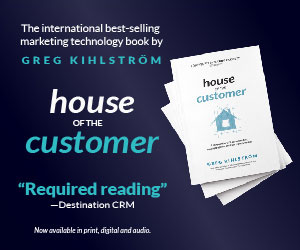This article was based on the interview with Carl White of Nano Interactive by Greg Kihlström, MarTech keynote speaker for The Agile Brand with Greg Kihlström podcast. Listen to the original episode here:
It is crucial for advertisers to have a strong first-party data strategy in the post-cookie world. The imminent demise of third-party cookies is leading to a significant shift in the way marketers target, measure, and track users. As a result, brands need to reassess their strategies and prioritize privacy to ensure they can continue to deliver effective advertising campaigns.
One of the main challenges in the post-cookie world is the need for brands to develop a first-party data strategy. First-party data refers to the information collected directly from customers through interactions with a brand’s website, app, or other owned channels. This data is valuable because it is willingly provided by customers and offers insights into their preferences, behaviors, and interests. However, brands must ensure that they obtain proper consent from customers to collect and use their data in a privacy-compliant manner that adheres to regulations like GDPR and CCPA.
Replacing the shared ecosystem-wide data set that cookies provided is no easy task. Advertisers need to find alternative ways to gather relevant data without compromising user privacy. This may involve using first-party data in conjunction with other identifiers or markers of identity, such as emails or phone numbers. However, it is important to consider the potential risks associated with collecting more personal data points. Advertisers must ask themselves whether these cookie replacements are truly viable in the long term.
The pressure is on advertisers to make the most of the first-party data they have. They can use modeling techniques and new technologies to scale up their data and make it more useful and viable. By identifying attributes of their ideal customers and leveraging machine learning and generative AI, advertisers can target specific demographics without relying on cookies or profiling. This evolution towards AI-led contextual targeting allows for performance without compromising on transparency.
Privacy will remain central to the debate surrounding digital advertising. Brands that are considered prepared for the post-cookie world are those that are actively testing and learning. They understand that some seemingly easy solutions, such as IP addresses or location-based targeting, may not be sustainable in the long run. Consumers are increasingly taking steps to avoid being trapped by these methods, emphasizing the need for a move away from profiling approaches.
Adopting a privacy-conscious approach requires brands to think long term. They must consider the scalability and viability of their cookie replacements and first-party data solutions. While data clean rooms may offer some benefits in terms of data privacy, they still rely on stitching together IDs and user attributes, which can raise concerns about profiling and tracking. A bigger win for advertisers is to focus on modeling their first-party data into identity-free environments, allowing for both scale and privacy.
A strong first-party data strategy is crucial for advertisers in the post-cookie world. Brands need to develop a first-party data strategy, gain customer consent, and find alternative ways to gather relevant data. Additionally, marketers need to rethink their approach to personalized customer experiences in a privacy-conscious manner. Adapting to these challenges will require innovation, transparency, and a customer-centric mindset. By prioritizing privacy, advertisers can navigate the changing landscape of digital advertising and continue to deliver effective campaigns while respecting user privacy.











